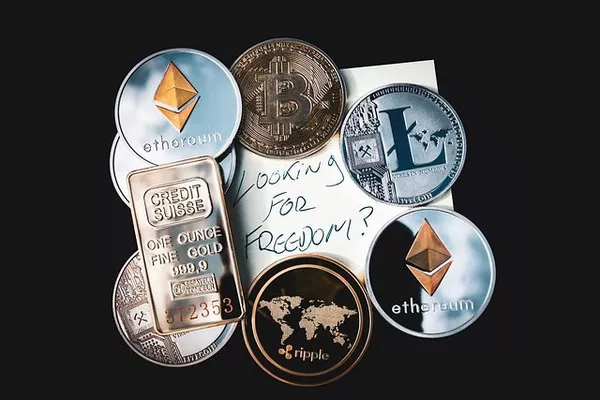Investors and enthusiasts of precious metals often encounter a perplexing situation: the actual cost of purchasing silver is usually higher than its spot price. The spot price of silver refers to its current market price per ounce, which fluctuates based on supply and demand dynamics in the commodities market. However, when buying silver in the form of coins, bars, or jewelry, customers often pay a premium over the spot price. This premium can vary significantly and understanding the reasons behind this discrepancy is crucial for anyone involved in the silver market.
The Basics of Spot Price
The spot price is essentially the immediate cost at which silver can be bought or sold for delivery. This price is determined by trading activities on commodity exchanges such as the COMEX (Commodity Exchange, Inc.), which reflect the latest market demand and supply. The spot price serves as a benchmark for transactions in the precious metals market.
Factors Contributing to the Premium Over Spot Price
Several factors contribute to the premium added to the spot price of silver. These factors include manufacturing and distribution costs, market demand, dealer markups, numismatic value, and economic conditions. Each of these components plays a distinct role in shaping the final purchase price of silver.
1. Manufacturing and Distribution Costs
One of the primary reasons silver costs more than the spot price is the manufacturing and distribution expenses involved in transforming raw silver into marketable products. These costs include:
Refining Costs: Converting raw silver into a pure, investment-grade form involves refining processes that add to the cost. The level of purity and the complexity of the refining process can affect the overall cost.
Minting Costs: Silver products such as coins and bars need to be minted. The minting process involves casting, stamping, and quality assurance, all of which incur expenses.
Packaging and Shipping: Secure packaging and shipping of silver to dealers or end buyers further contribute to the overall cost. Ensuring that the silver arrives without damage or loss requires substantial resources.
2. Market Demand and Supply Dynamics
The demand for silver products can significantly influence their price above the spot rate. When demand is high, especially for popular forms of silver like American Silver Eagles or Canadian Maple Leafs, premiums can soar. Conversely, when demand wanes, premiums might decrease, though they seldom reach zero.
Seasonal Demand: There are times of the year when silver demand spikes, such as during holiday seasons or in times of economic uncertainty when investors flock to safe-haven assets.
Market Speculation: Speculative activities can also drive up the demand for physical silver, pushing premiums higher. Investors speculating on future price increases may create a surge in buying, elevating premiums.
3. Dealer Markups
Dealers play an essential role in the silver market by facilitating transactions between buyers and sellers. To remain profitable, dealers add a markup to the silver they sell. This markup covers their operational costs, including:
Business Overheads: Rent, utilities, salaries, and other operational expenses need to be covered by the dealer’s markup.
Risk Management: Dealers assume various risks, such as market volatility and inventory holding costs. The markup helps mitigate these risks.
Profit Margins: Like any business, dealers need to make a profit to sustain their operations. The markup over the spot price ensures their profitability.
4. Numismatic and Collectible Value
Silver coins and bars can carry additional value beyond their metal content due to their numismatic or collectible significance. Coins with historical importance, limited mintages, or unique designs can command higher premiums.
Historical Coins: Older coins, particularly those with historical relevance or rarity, can be highly sought after by collectors, pushing their prices well above the spot price.
Limited Editions: Coins with limited production runs often become collectible items, with demand driven by scarcity. This can result in significant premiums over the spot price.
5. Economic Conditions and Market Sentiment
Broader economic conditions and market sentiment can greatly influence the premium on silver. During times of economic instability or geopolitical tension, demand for safe-haven assets like silver typically rises, increasing premiums.
Inflation Concerns: When inflation is high or expected to rise, investors often turn to silver to protect their purchasing power, driving up premiums.
Currency Fluctuations: Variations in currency exchange rates can affect silver prices and premiums, especially for international buyers.
Political Uncertainty: Geopolitical tensions or uncertainties can lead to increased demand for precious metals as a hedge against potential financial turmoil.
The Role of Physical versus Paper Silver
Another crucial aspect to consider is the difference between physical silver and paper silver (such as silver ETFs or futures contracts). Physical silver requires storage, security, and insurance, which adds to its cost. Paper silver, on the other hand, can be traded more easily and doesn’t incur the same logistical expenses.
Storage and Security Costs: Holding physical silver necessitates secure storage solutions, whether it’s a safe at home or a professional vault, both of which incur costs.
Insurance Costs: Insuring physical silver against theft or damage adds another layer of expense that contributes to the premium.
Conclusion
Understanding why silver costs more than its spot price involves recognizing the multitude of factors that contribute to its final market value. Manufacturing and distribution expenses, market demand and supply dynamics, dealer markups, numismatic value, and broader economic conditions all play pivotal roles. For investors and collectors, these premiums represent the additional costs necessary to transform raw silver into accessible and secure investment products. By comprehending these elements, one can make more informed decisions when investing in or purchasing silver, ensuring that they fully appreciate the true value and costs associated with this precious metal.


